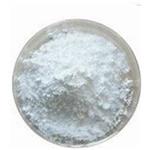- Octyl gallate
-

- $0.00 / 1KG
-
2025-04-16
- CAS:1034-01-1
- Min. Order: 1KG
- Purity: 99%
- Supply Ability: 20 mt
- Octyl gallate
-

- $0.00 / 25kg
-
2025-04-16
- CAS:1034-01-1
- Min. Order: 1kg
- Purity: 99%
- Supply Ability: 500mt/year
- Octyl gallate
-

- $6.00 / 1kg
-
2025-04-16
- CAS:1034-01-1
- Min. Order: 1kg
- Purity: 99%
- Supply Ability: 2000KG/Month
|
| Product Name: | Octyl gallate | | Synonyms: | N-OCTYL GALLATE;OCTYL 3,4,5-TRIHYDROXYBENZOATE;OCTYL GALLATE;GALLIC ACID OCTYL ESTER;GALLIC ACID N-OCTYL ESTER;Gallic Acid Octyl Eester;Benzoic acid, 3,4,5-trihydroxy-, octyl ester;OCTYL GALLATE(OCTYL 3,4,5-TRIHYDROXYBENZOATE) | | CAS: | 1034-01-1 | | MF: | C15H22O5 | | MW: | 282.33 | | EINECS: | 213-853-0 | | Product Categories: | Aromatic Esters | | Mol File: | 1034-01-1.mol |  |
| | Octyl gallate Chemical Properties |
| Melting point | 101-104 °C(lit.) | | Boiling point | 262.5°C (estimate) | | density | 1.0984 (rough estimate) | | refractive index | 1.6200 (estimate) | | storage temp. | Store below +30°C. | | solubility | soluble2.5%, clear, colorless (AcOH (MEOH)) | | form | Solid | | pka | 7.94±0.25(Predicted) | | color | White to Off-White | | Water Solubility | 20mg/L(29.99 ºC) | | BRN | 2132305 | | LogP | 3.660 | | CAS DataBase Reference | 1034-01-1(CAS DataBase Reference) | | EPA Substance Registry System | Benzoic acid, 3,4,5-trihydroxy-, octyl ester (1034-01-1) |
| Hazard Codes | Xn | | Risk Statements | 22-43 | | Safety Statements | 24-37 | | WGK Germany | 1 | | RTECS | LW8225000 | | TSCA | Yes | | HS Code | 2918 29 00 | | Toxicity | LD50 orally in Rabbit: 1960 mg/kg |
| | Octyl gallate Usage And Synthesis |
| Description | Octyl gallate is the ester formed by 1-octanol and gallic acid. It can be used as an antioxidant and preservative to be supplemented to the food. It has been demonstrated to be an effective fungicide being capable of inhibiting the growth of S. cerevisiae and Z. bailii as it can inhibit the fluidity of the cell membrane through acting as a nonionic surface-active agent. It is also capable of killing both DNA and RNA viruses with a relatively moderate cytotoxicity. For example, it has the potential to treat influenza. Octyl gallate also has certain bactericidal activity, being capable of treating the infections associated with enterococci.
| | References | [1]Ken-Ichi, Fujita, and K. Isao. "Antifungal activity of octyl gallate. " International Journal of Food Microbiology 79.3(2002):1
[2]Gutiérrez-Fernández, J, et al. "Antimicrobial activity of binary combinations of natural and synthetic phenolic antioxidants against Enterococcus faecalis. " Journal of Dairy Science 96.8(2013):4912-20.93.
[3] Yamasaki, H, et al. "Antiviral effect of octyl gallate against influenza and other RNA viruses. " International Journal of Molecular Medicine 19.4(2007): 685-688.
| | Description | During the 1940s, propyl gallate and several other alkyl gallates
were allowed for use in foods in a number of countries. Since
gallic acid contains three phenolic hydroxyl groups, it is a rather
potent antioxidant; however, the propyl ester has a significant
degree of water solubility. As a consequence, propyl gallate tends
to partition into any water phase which may be present and to
complex with iron salts to give bluish black colors. Also, its relatively
poor resistance to heat degradation makes it ineffective for
baking and frying applications. The higher alkyl gallates (butyl
and octyl) are more fat soluble. | | Chemical Properties | White powder | | Uses | Used in treatment of alcohol dependence. | | Uses | Octyl gallate is an antioxidant for use in cosmetic and pharmaceutical products and in food products, such as margarine and peanut butter. | | Uses | Octyl gallate is an antioxidant that is used as a preservation
agent in a wide variety of foods, oils, and cosmetics. | | Definition | ChEBI: A gallate ester obtained by condensation of the carboxy group of gallic acid with the hydroxy group of octanol. | | General Description | Octyl gallate is an ester of gallic acid which is generally used as an antioxidant in food and pharmaceutical industries. It can act against the oxidative damage caused by reactive oxygen species (ROS) in the form of hydroxyl radicals or hydrogen peroxides, and reactive sulfur species (RSS) | | Contact allergens | Octyl gallate, a gallate ester (E 311), is an antioxidant
added to food and cosmetics to prevent oxidation of unsaturated
fatty acids. Cases were sparsely reported in food
industry or from lipsticks. Patch tests are frequently irritant. | | Safety Profile | A poison by
intraperitoneal route. Moderately toxic by
ingestion. When heated to decomposition it
emits acrid smoke and irritating fumes. |
| | Octyl gallate Preparation Products And Raw materials |
|